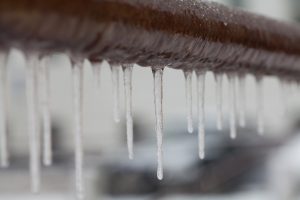In America we’re used to have running water readily available and in seemingly endless supply, but the long-running drought in California and water restrictions in western states should tell us otherwise. There is a finite supply of water and though water is a renewable resource the amount of clean drinking water is declining. We can all help out by using less water (and paying less). These seven ways to conserve water at home are very practical and some are surprisingly easy.
1. Turn off faucets
How often do you let faucet water run needlessly as you wash or rinse dishes, wash your hands or face, brush your teeth or shave? Your bathroom faucet runs at about two gallons of water per minute. Turn off that tap while you brush your teeth and shave, and you’ll save hundreds of gallons a month.
2. Shorten showers
An older showerhead can put out as much as 5 gallons of water per minute. Install a new low-flow showerhead to bring that down to 2.5 gallons and then cut your shower time in half and you will have reduced your shower water use by 75 percent!
3. Fix leaks
Even a slow drip from a leaking faucet can waste as much as 20 gallons of water a day. A leaking toilet can waste 200 gallons a day! (To check your toilet for a leak, put several drops of food coloring in the tank. If that color shows up in the bowl without flushing, you have a leak.)
4. Go to a car wash
Instead of washing your car at home with the hose, go to a gas station car wash that will use less water and recycle it.
5. Install low-flow or dual-flush toilet
Replace an old toilet with a new ultra-low volume (ULV) 1.6 gallon flush toilet to use up to 70 percent less water. That could reduce your total indoor water use by 30 percent! Another option is a dual-flush toilet that could use as little as 1 gallon for the low-level flush.
6. Replace your old water heater with a tankless hot water heater
A tankless water heater only heats water when you need it. And when you need hot water, the supply is ongoing… so no more worrying about being the last one to take a morning shower. You’ll save about $80 a year in water heating bills.
7. Upgrade to a High Efficiency (HE) washing machine
Today HE washing machines use as little as 7 gallons per load. That’s a lot less than your old washing machine that could be using up to 54 gallons! Newer Energy Star-rated washers use less water and 50 percent less energy.
Summary
None of these are particularly hard to do, but act on a few of them (or all of them) and you could conserve a lot of water—and lower your monthly bills. Some of these are do-it-yourself projects, but a home services company could help you with any of these projects that require a professional
Continue Reading
Posted in Uncategorized | Comments Off on 7 Easy Ways for You to Start Saving on Your Water Consumption





